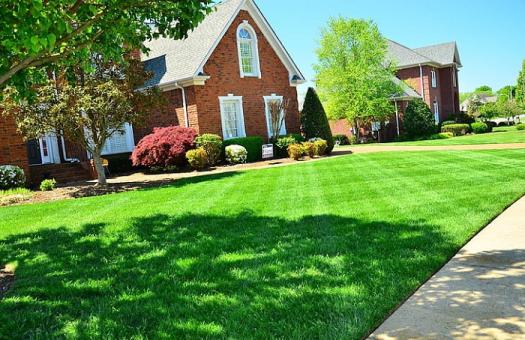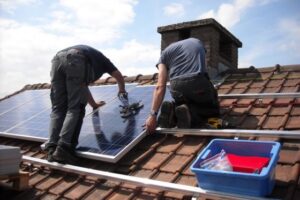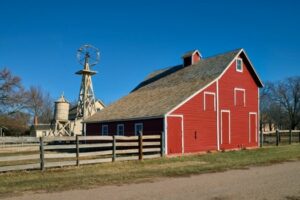Your lawn is the crowning glory of any home, from summer barbecues and snowman-building parties to being an integral component of curb and overall curb appeal. Calgary’s climate presents challenges in maintaining lush and green lawns; this comprehensive guide will walk you through seeding in Calgary to ensure it remains its best throughout the year.

Table of Contents
Understanding Calgary’s Climate
Calgary features a semi-arid, highland continental climate. As such, residents experience warm summers and cold winters, with highly variable weather patterns throughout the year. Knowing this unique climate is crucial when seeding lawns in Calgary.
Temperature
Calgary’s temperatures can be rather extreme. Summer temperatures can reach 30degC (86degF), while winter lows have dropped as low as -30degC (-22degF), creating harsh conditions for certain grass species.
Precipitation
Calgary may have a dry climate, but the city still gets ample rain yearly – particularly in June! Annual precipitation is about 418 millimetres, supporting certain grass varieties growing here.
Soil Conditions
Calgary’s soil tends to be clayey, meaning it retains water well but has poor drainage. Aerate your soil before seeding to improve its structure and increase root penetration.
When to Seed Your Lawn
Selecting an optimal time and date to seed your lawn in Calgary is crucial to its health and success, with spring and autumn being ideal times for doing so.
Spring Seeding
Springtime provides the ideal conditions for sowing new lawn seeds, particularly between April and June when soil temperatures have exceeded 10degC (50degF). This allows enough time for germinating grass seeds to take hold before summer’s intense heat arrives.
Fall Seeding
Fall is also ideal for lawn seeding, ideally between late August and early October. At this time, weather patterns become more stable, which benefits grass growth without experiencing scorching temperatures.
Choosing the Right Seed
Selecting suitable grass seeds will ensure your lawn thrives under Calgary’s challenging environmental conditions. Hardy varieties that can tolerate temperature variations are usually the best options.
Kentucky Bluegrass
Kentucky bluegrass is a highly desired option in Calgary due to its ability to tolerate colder climates. With its lush, blue-green colour and dense growth pattern, Kentucky bluegrass makes an eye-catching visual statement.
Fine Fescue
Fine fescue grass variety is another excellent option in Calgary’s climate, known for its drought tolerance and ability to flourish in cooler temperatures.
Perennial Ryegrass
Perennial ryegrass germinates quickly, providing rapid ground coverage. It’s an ideal option for overseeding and patching holes in your lawn quickly.
Preparing Your Lawn for Seeding
Preparing your lawn properly before seeding is vital for successful seeding. This ensures that seeds have optimal conditions to germinate and grow into mature plants.
Remove Debris
Start by clearing away debris, leaves, and dead grass from your lawn to allow the grass seed to contact the soil and increase the chances of successful germination.
Aerate
Calgary’s clayey soil necessitates aeration as an integral part of agriculture. Aeration involves making small holes in the ground to allow air, water and nutrients to permeate deeper roots for more profound and robust development.
Amend Soil
After aeration, it’s recommended to amend your soil. Adding topsoil or compost as a thin layer on top can improve soil structure while providing essential nutrients to grass seeds.
The Seeding Process
Once your lawn has been prepped for sowing seeds, the time has come to plant them! Proper planning and execution will produce optimal results.
Spread the Seeds
Spread the seeds evenly across your lawn using a spreader for best results. Be sure to overlap slightly to avoid leaving gaps behind.
Rake and Roll
Once seeds have been spread, lightly rake the area to cover them in the soil and promote germination. Next, press them down into the ground with a roller for optimal seed-to-soil contact.
Watering
Water is essential in the germination process. Ensure the top layer of soil remains consistently moist until seeds sprout; avoid overwatering, which could wash away seeds altogether.
Caring for Your Newly Seeded Lawn
Post-seeding care is integral in maintaining a lush lawn. This involves watering, fertilising and mowing as necessary to achieve this result.
Watering
Once germination occurs, reduce watering frequency but increase each application’s quantity for maximum root development. Water early morning to minimise evaporation losses.
Fertilising
Apply a high-grade fertiliser shortly after seeding for optimal nutrients; be cautious not to fertilise over; however, doing so could result in grass burn.
Mowing
Start mowing as soon as your grass reaches 3 inches tall, regularly cutting yet never more than 1/3 of each grass blade at once – this keeps your lawn neat while minimising stress on its grass blades.
Conclusion:
Rejuvenating your lawn through lawn seeding in Calgary unique climate can be immensely fulfilling. By understanding its specific requirements, choosing appropriate time and seed combinations for seeding, and properly caring for it afterwards, it can become a lush green oasis to complement your home’s aesthetic and provide year-round enjoyment to you and the neighbourhood at large! With hard work, perseverance, dedication and perseverance on your part, you may create a vibrant, healthy lawn that becomes the envy of everyone in town!




